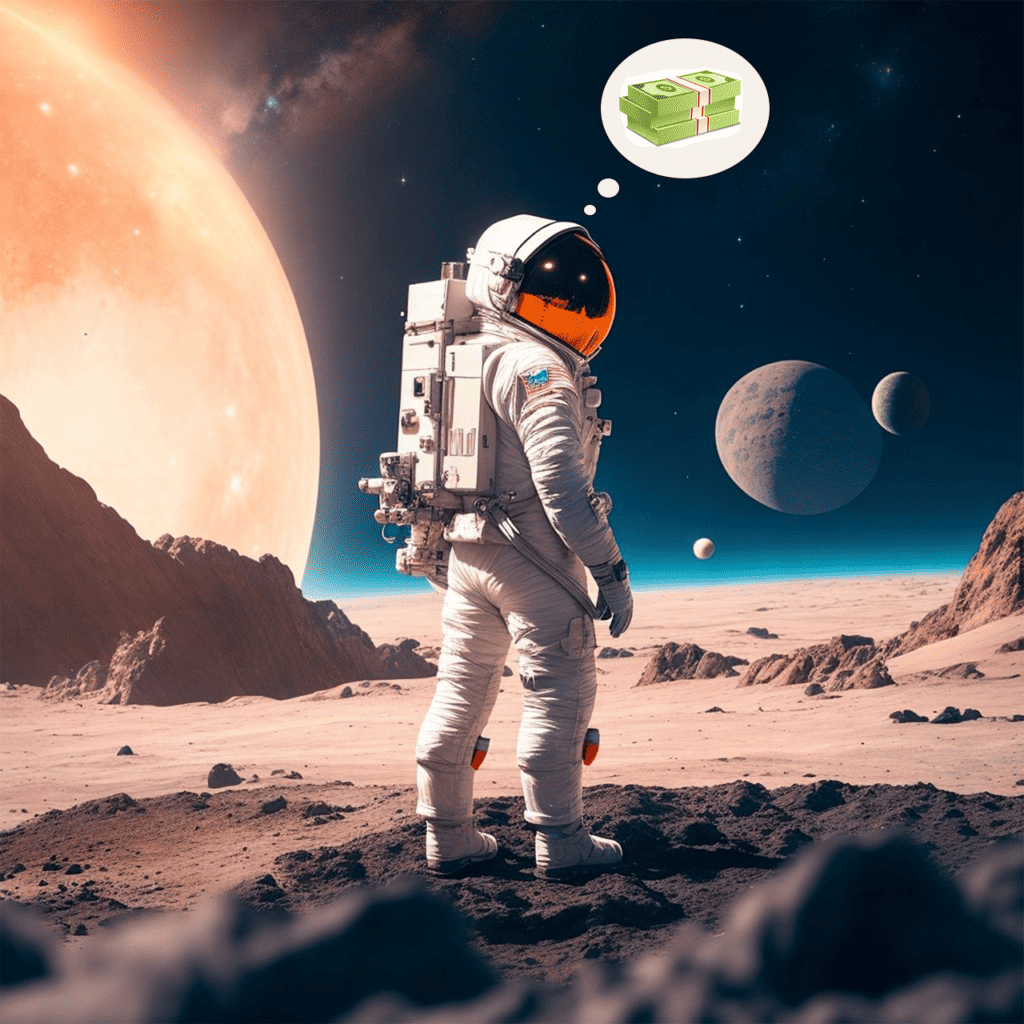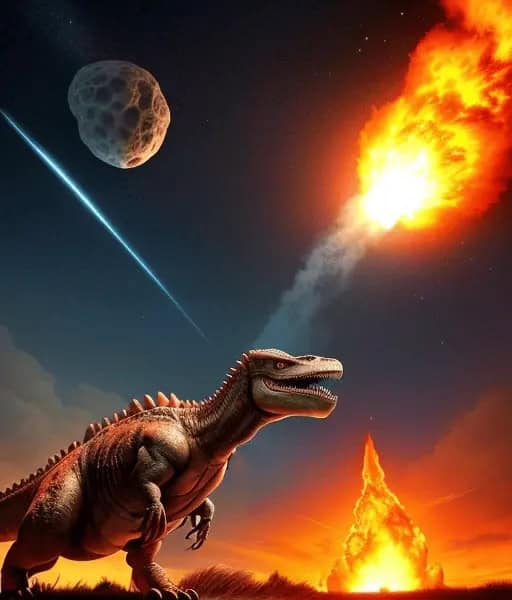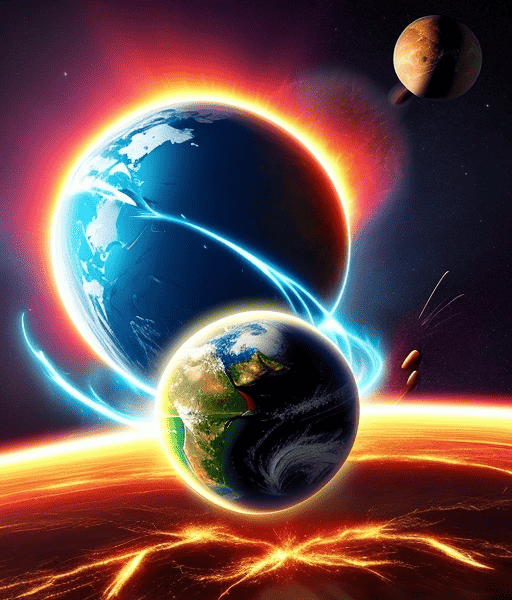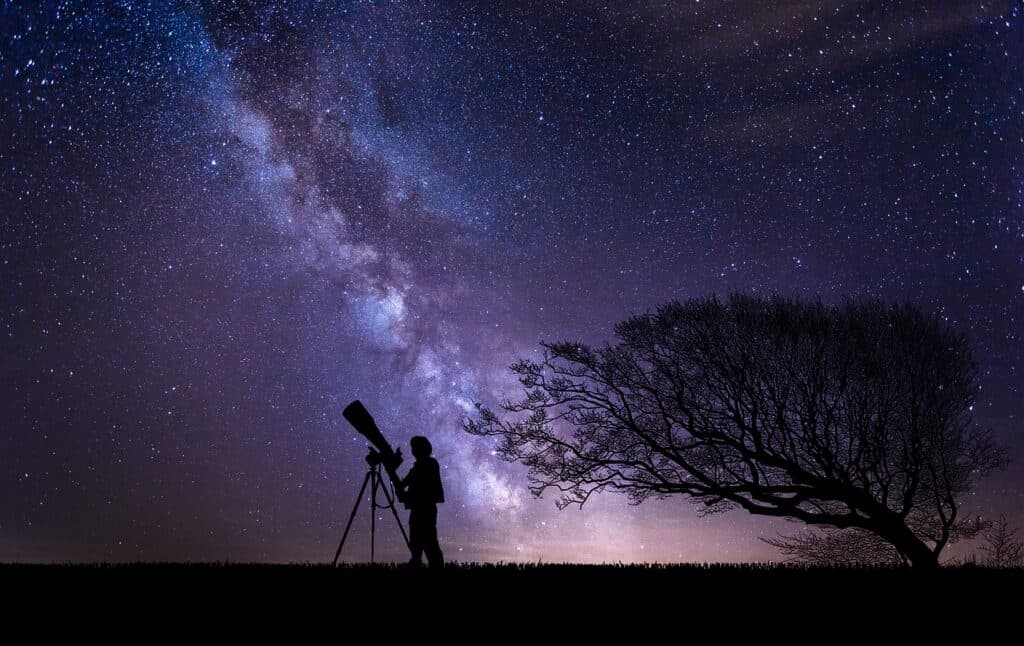Table of Contents
Space Science: Necessity or Wastage?

There is an idea that Space Science and exploration is a costly affair and money should be spent somewhere else. There is no doubt that in America and in the entire World there are lot of poverty and many poor people live in terrible conditions without even basic necessities. Many are homeless and are forced to live in extremely difficult situations.
COVID-19 has made the situation even worse as it hit the economy worldwide and many people have lost their jobs. The mass layoffs are adding to the woes of the economy. On top of all these, extremely high inflation is damaging the growth prospects of the US and the world economy as the FED and other central banks have resorted to continuous rate hikes.
In this scenario, one may think that the money spent on space science could be spent to boost the economy. After all, how going to space or the moon or Mars will solve humanity’s pressing matters? How thinking about space science or the Big Bang or the Universe or Gravity or Stars or Exoplanets is going to eradicate hunger or poverty? From this perspective, one would believe that spending on space science is only a waste.
However, things are not so simple. Spending more money in the economy would not help the economy instead the extra spending may create inflationary pressure which we have witnessed post-pandemic economy. The economy sustains due to the creation of wealth which solves people’s essential needs and helps them sustain their lives. Wealth creation is a complex and tough process that depends on a lot of factors and various sectors that are interconnected and depend on one another.
Space science is one of those factors that contribute to other sectors and directly contribute to the wealth creation of the economy of individual countries and the overall Global economy. If we don’t spend on space science, we will hinder its ability to create wealth generation in the short term, and in the long term, we will destroy the development of the entire world economy. So, investing in space science, space exploration, astronomy, etc is a necessity and not a waste.
Spending on Space Science

If we look at the budgets of the World’s major Space agencies and look at it as the percentage of total Government spending, we will see that Governments around the world spend only around 0.5% or less of their total spending on Space science. NASA’s budget for FY 2023 was $25.4 BN which was roughly 0.44% of the total spending ($5.8 TN) of the US Government. European Space Agency which is backed by 22 member states, has a budget of €7.08. Russia’s ROSCOSMOS has a proposed budget of $3.8 BN which is 1.1% of $343 BN proposed spending by the Russian Government.
The Chinese space agency, China National Space Administration, has a proposed budget of around $17 BN which is 0.43% of the total proposed spending by the Chinese Government – $ 4 TN. ISRO, the Indian space organization, has a budget of 125 BN Indian Rupees. Indian Government’s total proposed spending for 2023-24 is almost 45 TN Indian Rupees, meaning the Indian Government spends 0.28% of its budget on ISRO. Japan’s space organization, JAXA, is supposed to get around $1.5 BN for their budget in 2023 which is only about 0.18% of total spending by the Japanese Government – around $840 BN.
So, it can be said that the spending by various Governments in space science is not an extravagant one and it is well within the bounds of economic considerations. Now, we are going to discuss the reasons why the spending on space science is worth it.
6 Reasons Why We Should Invest in Space Science
1. Survival of Humanity

66 million years ago an asteroid crashed into Earth and wiped out almost 75% of the life on Earth at that point in time, ending 150 Million years of the supreme reign of Dinosaurs. This event is not an off event. Periodic destruction of life on Earth has happened in every 40-100 Million years. Some of those destructive events were caused by asteroid impacts.
If these asteroids were to collide with Earth now, humanity would face its biggest existential threat. It could wipe out humanity and the structures of human civilization from the face of the Earth. Vast regions of land and sea will face extreme negative consequences from the asteroid impacts, rendering a huge portion of Earth inhabitable and making it difficult for rest of the humanity and other life forms to survive.
Other than apocalyptic-level asteroid impacts, there have been countless asteroid impacts on Earth which have caused a wide range of destruction to the life on Earth. These impacts will also have the potential to wipe out a large portion of the human population and could deliver extensive damage to the infrastructure on which humanity depends.
Other than asteroids, which can be found in huge numbers in the asteroid belts between Mars and Jupiter, there are comets that sit in the frozen Kuiper Belt and make periodic visits to the inner Solar System. These comets can also have the potential to wipe out the human population on Earth. One such event happened in July 1994 when the Shoemaker-Levy 9 comet collided with Jupiter. Some of the collision created holes in Jupiter’s upper atmosphere which were as big or bigger than Earth. If that comet were to collide with Earth, the entire human population would have been wiped out.
As there are tens of thousands of such celestial objects which could potentially collide with Earth, it is not a matter of ‘if’ such objects will collide with Earth but a matter of ‘when’. Investment and research in space science would help us to avert such a situation.
There are scientific programs, such as NASA’s Near Earth Object Observation program which keeps an eye on the asteroid and other celestial objects which could collide with Earth. Scientists are developing methods by which they will be able to deflect any asteroid or comet that would come into Earth’s orbit. We need to keep on investing in space science so these types of programs can identify near-Earth objects and develop plans to deflect them from Earth’s orbit.
2. Inevitable Destruction of Earth

Asteroid and comet impacts may destroy most of the humanity in the Earth. However, there will still probability of survival of life on Earth after a sufficiently long time. If even a small portion of humans survives the collision, they can make sure that humanity is not completely wiped out and after a long time, they can again rehabilitate the Earth.
However, in 5 Billion years our planet Earth will be destroyed as the Sun will become a Red Giant star and will engulf all the inner solar system’s planets. Even before that, in the next 1 Billion years, Earth might lose all its Oxygen due to natural reasons. Then there are other possibilities through which our planet could be destroyed well before that. If a rogue planet, another star or a solar mass black hole (which could be lurking in the vicinity without being detected) hurl into our solar system, it will create chaos and will destroy the solar system as we know it.
Earth will definitely face the consequences as it may get ejected from the solar system, or it may collide with another planet or moon of the solar system, or it may directly collide with a foreign object or the Sun itself might get ejected from its own solar system. In these scenarios, there will be no hope for Earth or any life on Earth. In these scenarios, we will have to leave Earth and find a habitable planet in the outer solar system, some moon of Jupiter or Saturn, or in some cases, outside our solar system.
In the Sci-fi Movie ‘Melancholia (2011)’, directed by Lars Von Trier, we see that a Rogue Jovian planet, much bigger than the Earth, hurl into the solar system and collide with Earth, destroying the entire Earth and ending all life in it.
We have yet to find any Earth-like planet outside our solar system but with JWST we might detect one very soon. However, even if we find such a planet, with our current scientific capabilities, we will be unable to reach that planet in a short span of time or to carry 8 Billion people from Earth to that planet. So, we would have to find better and more innovative ways to reach the nearest habitable planet and carry enough humans to ensure our survival. Hence, we would have to continue investing in space science so that we humans as a species survive the inevitable destruction of Earth.
3. Human Curiosity

By nature, we humans are curious about nature and reality. It is our curiosity that led to us inventing fire by friction. It is our curiosity that led to our inventing tools to make our lives easier. We discovered science and started to experiment and innovate practical equipment to make our lives better, produce more food, safeguard from raging nature, and make the future better for ourselves. It is also our curiosity that makes us question about very nature of reality. We were not just content with making our lives secure and comfortable, we wanted to understand the fabric of reality and the true nature of reality.
In that quest, bright minds of humanity discovered groundbreaking theories and concepts that defied our intuition and challenged the existing ideas. These exceptionally brilliant minds faced with lot of resistance and brutality from fellow humans but that did not stop the scientific progress. Generation by generation, intelligent and curious people would take up the cause of science, make us understand the true nature of our reality, shape our future with innovations and discoveries, make our life easier through discoveries and innovation, and provide us with a deeper understanding of our Universe.
In this quest of curiosity, we have made progress in all branches of science including medicine, genome, engineering, chemical, nuclear, computer science, electrical, information, and space science. Just the way, curiosity has propelled humans to investigate various branches of science, they investigate space science.
It is impossible to pick and choose what aspect of science one would devote his/her/their lives to. The innate nature of curiosity will take many bright and young minds into the world of space science and through their sheer brilliance and intelligence they will advance the field and that will attract even more young and brilliant minds. So as a species, we need to keep on investing in all fields and branches of science including space science. As an advanced civilization, we can not pick and choose which field an individual will be interested in and the inborn curiosity of nature will propel some towards the research on space science.
4. Helping Other Industries including Medical Sector

Investment in Space Science does not only help the space sector, but it is helping many other industries and sectors, including the medical industry. This helping is done directly or indirectly. Satellites in orbit provide critical information on weather which helps farmers and authorities to prepare for floods, droughts, storms, wildfires, etc. Space technologies provide necessary technologies that help smooth the running of GPS and other global tracking systems. Many technologies developed during space exploration, have helped the medical industry devise new technology that helped detect and cure various diseases.
For example, while building the Hubble Telescope, NASA developed a device called ‘Charged Coupled Device’ which was instrumental in developing ‘Stereo-tactic Breasts Biopsies’ – a device that accurately detects breast cancer. India’s ISRO has used the technologies developed in Space programs to create a telemedicine network that provides medical services to remote villages in India.
Space technologies and satellites have helped the authorities with regard to early warning systems for devastating storms and floods. With the help of space satellites, NASA has provided critical weather information which was helping in saving lives and securing businesses. China’s CNSA and India’s ISRO have helped their respective agriculture sectors by providing critical technologies that helped predict rains, floods, storms, and drought. ISRO’s technologies are critical for tracking of monsoon which provides necessary inputs to the farmers so that they can adapt their farming to maximize the output.
5. Economic Activities and Job Creation

Investment in Space Science does not only help other industries and sectors, it also prop up the entire economy by supporting the job creation. Various space agencies across the world attract bright and intelligent minds. Many space agencies attract bright minds from outside their own countries. NASA has a large portion of expatriates working for it. By employing them, Space agencies create direct job growth.
Space agencies earn direct revenue through their various projects and missions. According to NASA, it earned $71.2 Billion as revenue in 2021. India’s ISRO has earned around INR 11 Billion. Then the space agencies work on various complicated projects that require collaboration and help from organizations from other industries. By working with these companies space agencies, like NASA, create ancillary industries which support and create even more jobs. According to NASA, in 2021 it supported creating 339,600 jobs in the US economy.
Various space programs and projects also directly help economic activities. NASA assisted the US Govt. to creating GPS which provides a navigation system to the entire world free of cost. Other space organizations (CNSA, ROSCOSMOS, ESA, etc) have created their own navigation systems which help them with both global and local navigation requirements. India’s ISRO has created a local navigation system that provides seamless navigation within the country. These navigation systems are extremely helpful in the movement of goods for businesses, delivery of essential products in various industries, providing assistance during natural calamities, and rescuing trapped people during floods or hurricanes.
Satellites in space also provide vital weather information that could predict incoming natural calamities such as floods, hurricanes, torrential rains, landslides, etc. By preparing early on this information, Governments can avoid loss of life and wealth. This information can be vital for the agriculture sector as many countries, like India, depend on monsoon for their farming activities. This way investment in space science gets circulated in the economy and provides crucial assistance in job creation and economic growth.
6. Resource Mining

Investment in Space Science has the potential to solve World’s resource scarcity. In the future, space science will enable us to harvest the fuel and other necessary materials needed for long interstellar voyages. Of these potential resources, rare earth elements will play a vital role. These are a group of 17 very rare minerals which is very expensive to mine in terms of investment and environment. Getting these rare materials from space will help us protect our environment as, apart from crucial usage in electronics, these 17 rare materials are instrumental in producing batteries.
Another potential material that can be mined from space is helium 3 which is an isotope of helium. These elements could be instrumental in producing clean and safe fuel for a pollution-free environment and for future space missions. Another resource that can be mined from space in the future is water. Asteroids, various moons in the solar system, and comets are full of water. These waters can be used to create fuels for future space missions and they don’t have to carry too much fuel from Earth, reducing the cost of space missions.
Apart from these vital materials, other metals and minerals, such as nickel, iron, cobalt, palladium, gold, and many more can be plentiful in space. As there are many moons, asteroids, and comets in the solar system, the amount of these materials in space vastly outmatches those of Earth. Currently, we have the technology to mine them and bring them back to Earth. Various space missions have brought back materials from the moon that were instrumental for research.
We even have technology to explore asteroids which are abundant in metals, minerals, and other resources. For example, JAXA’s Hayabusa 2 mission landed on an asteroid named Ryugu and brought back samples from the asteroids. However, these techniques are yet to be economically viable. For that, we need to keep on investing in Space science.
Read More Articles
- Solar System: 10 Astonishing Uniqueness of our star system
- Our Universe: An Incredible Journey of 13.7 Billion Years
- Indian Gooseberry (Amla): 10 Amazing Facts About This Wonder Fruit
- Top 6 Solar System Objects That Might Destroy Life On Earth
- The Great Physicist Peter Higgs Passes Away at 94
- Certain End of The Universe: 4 Forces of Nature to Watch Out For
- Big Bang: An Incredible Start of Universe 14 Billion Years Ago




